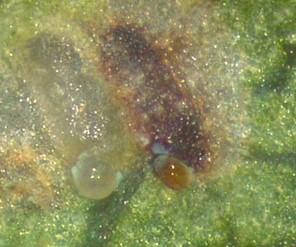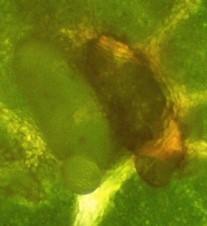VCLH Egg Pictures
Various States of VCLH Eggs
While Virginia creeper leafhopper egg clusters can be seen with the naked eye, in order to determine their status it is best to use a dissecting microscope with back lighting. What follows is a series of images that depict the various states of VCLH eggs.
VCLH eggs are typically deposited in clusters of 2-10 eggs, although they can be deposited singly. The VCLH coats the eggs with a substance called "brochosomes" which acts as protection for the eggs against predators, parasitoids and even other leafhoppers. Below are pictures of healthy, unparasitized VCLH eggs.
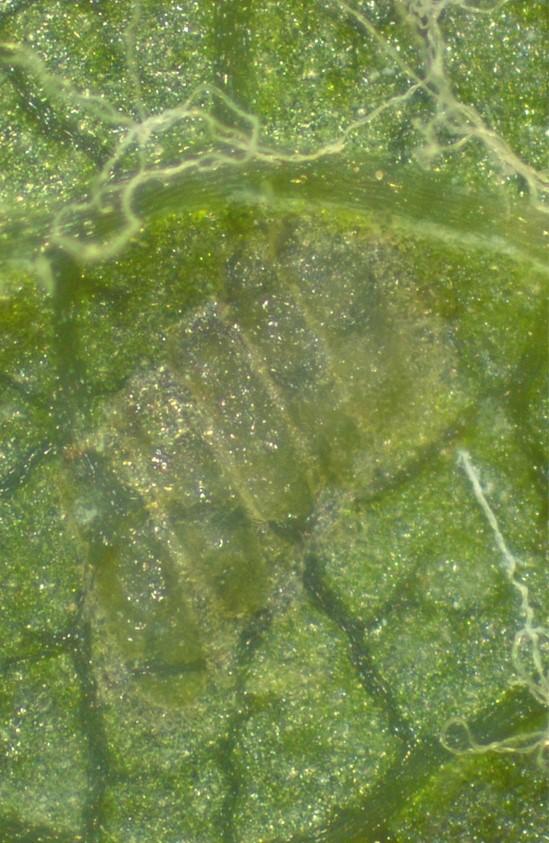
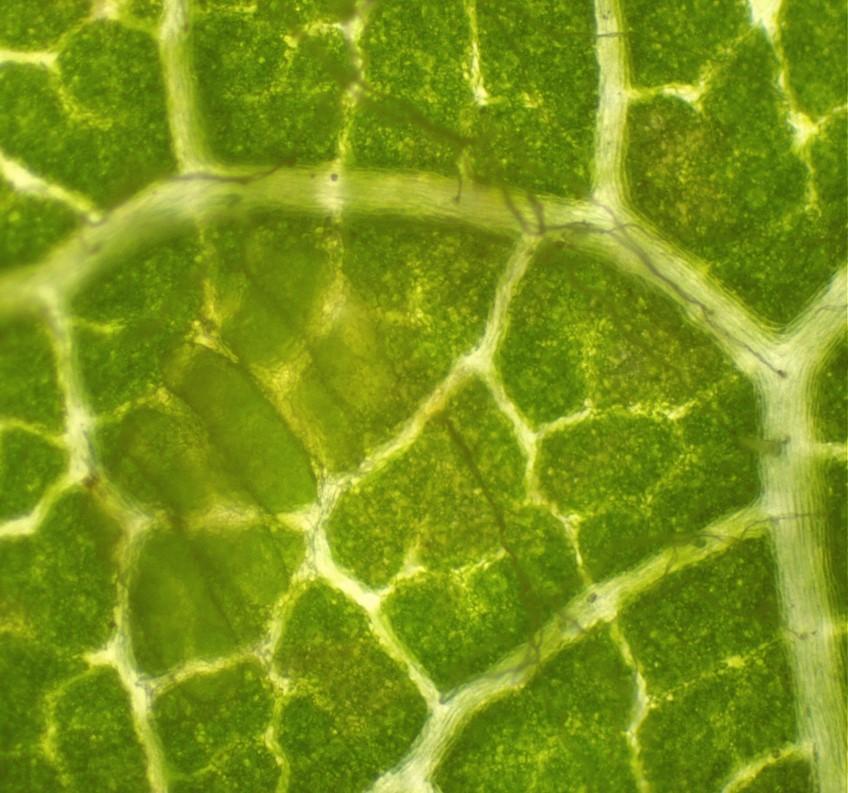
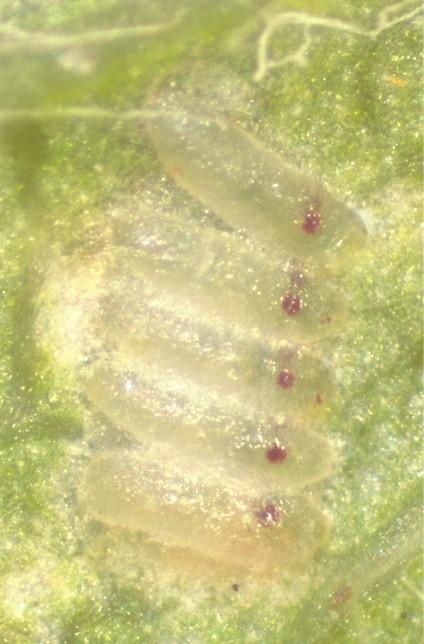
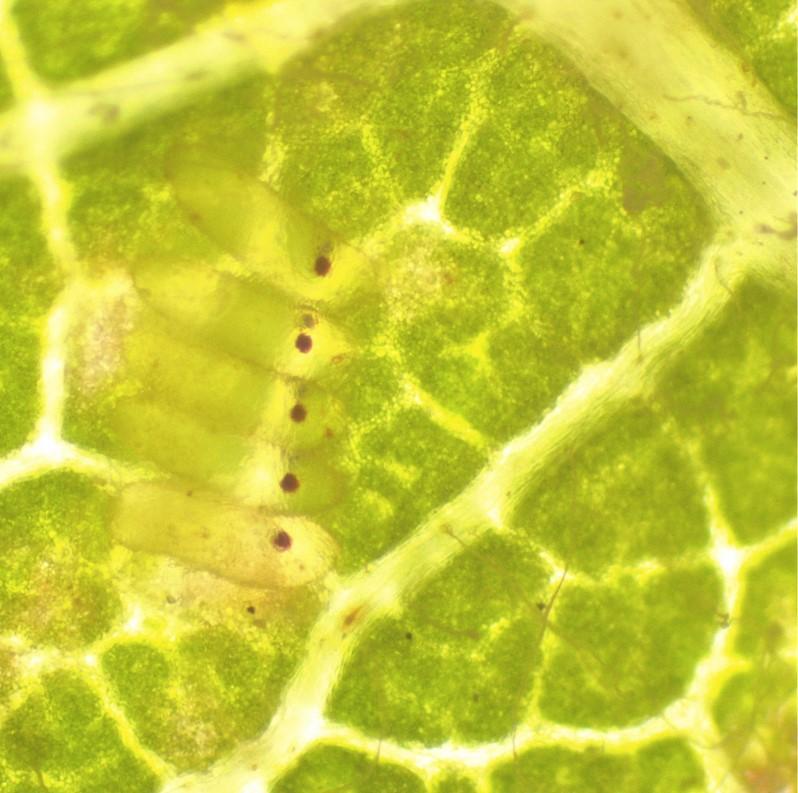
When the VCLH egg has completed development, the nymph will make a small tear along the edge of the egg and emerge through this space.
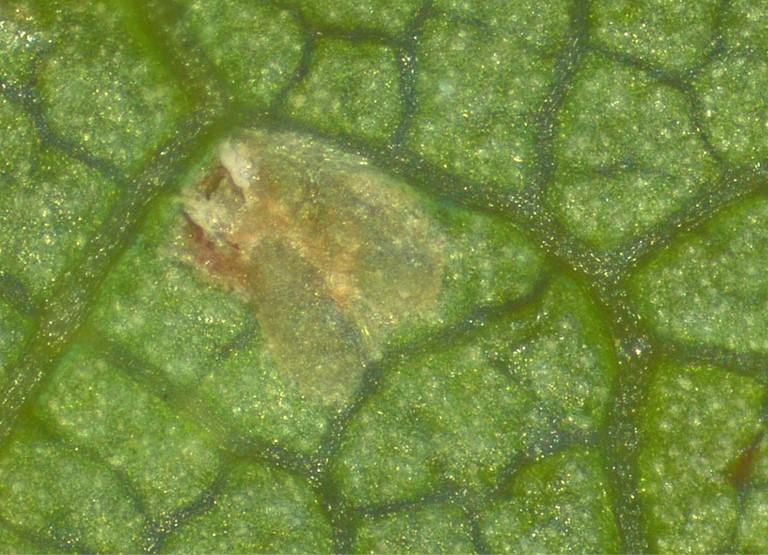
The key natural enemy of VCLH is Anagrus daanei, which is a small parasitoid (click for video) that lays its eggs inside of the eggs of VCLH. Once inside the VCLH egg, the Anagrus daanei larva consumes the contents of the VCLH egg and then completes its development inside the "shell" of the egg. You can see a video of Anagrus daanei parasitizing VCLH eggs here (click on link)
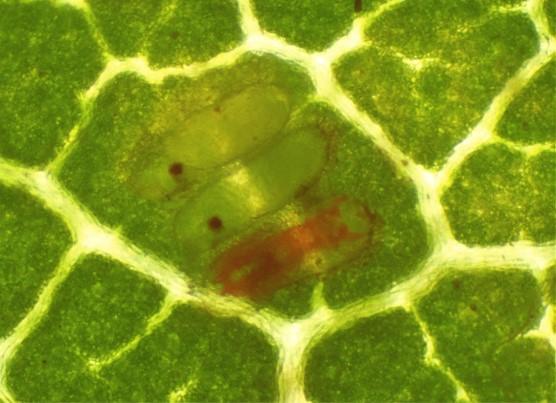
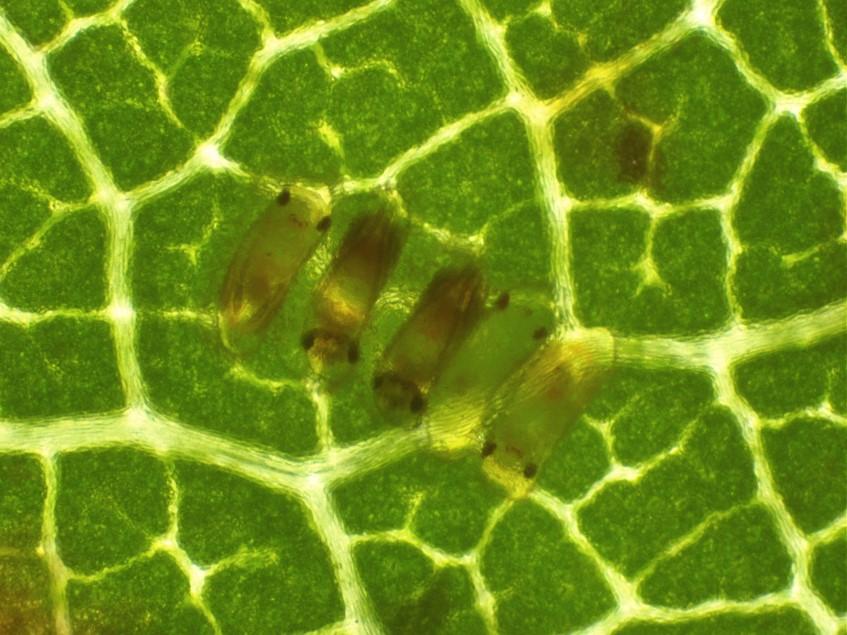
In contrast to VCLH nymphs, which emerge through a small tear along the side of the egg, the adult Anagrus daanei will chew a hole in the top of the egg and emerge upward through this opening. Click here to see a video of Anagrus daanei emerging from a VCLH egg.
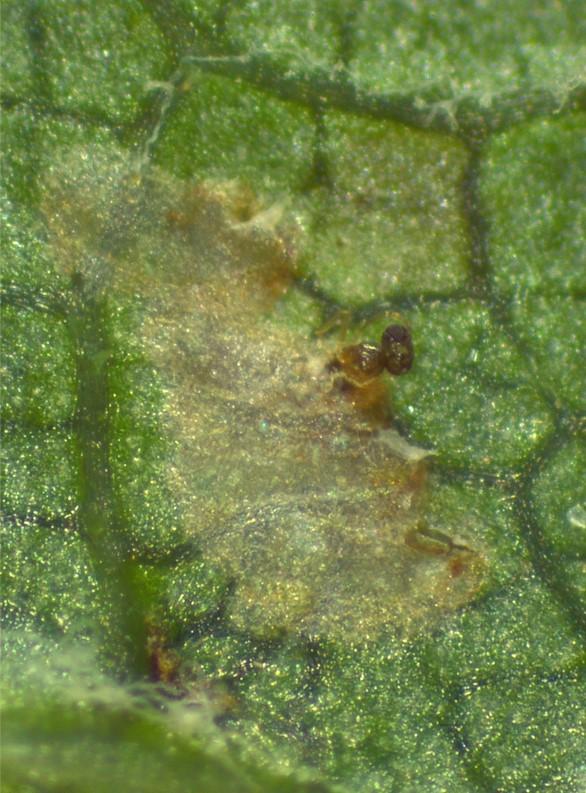
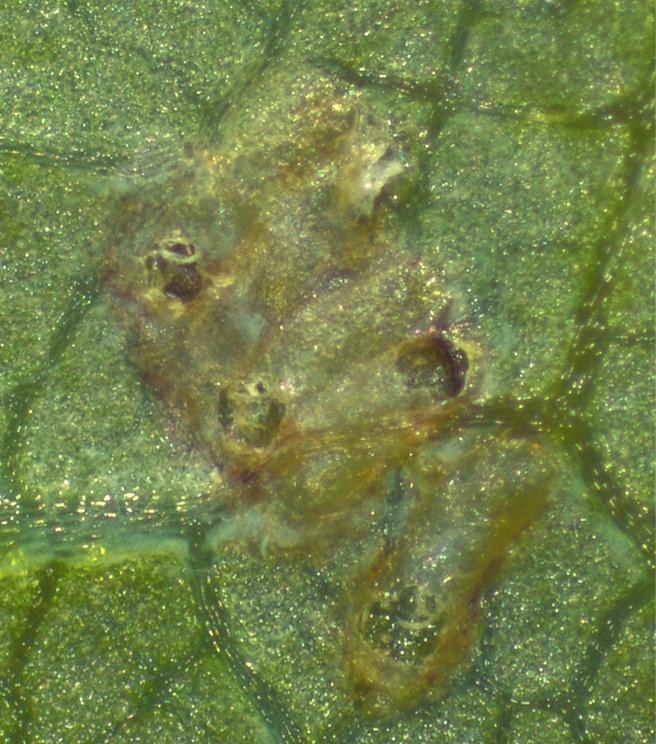
Sometimes healthy, unparasitized VCLH eggs fail to develop. This is most likely due to incomplete egg deposition by the adult VCLH.
